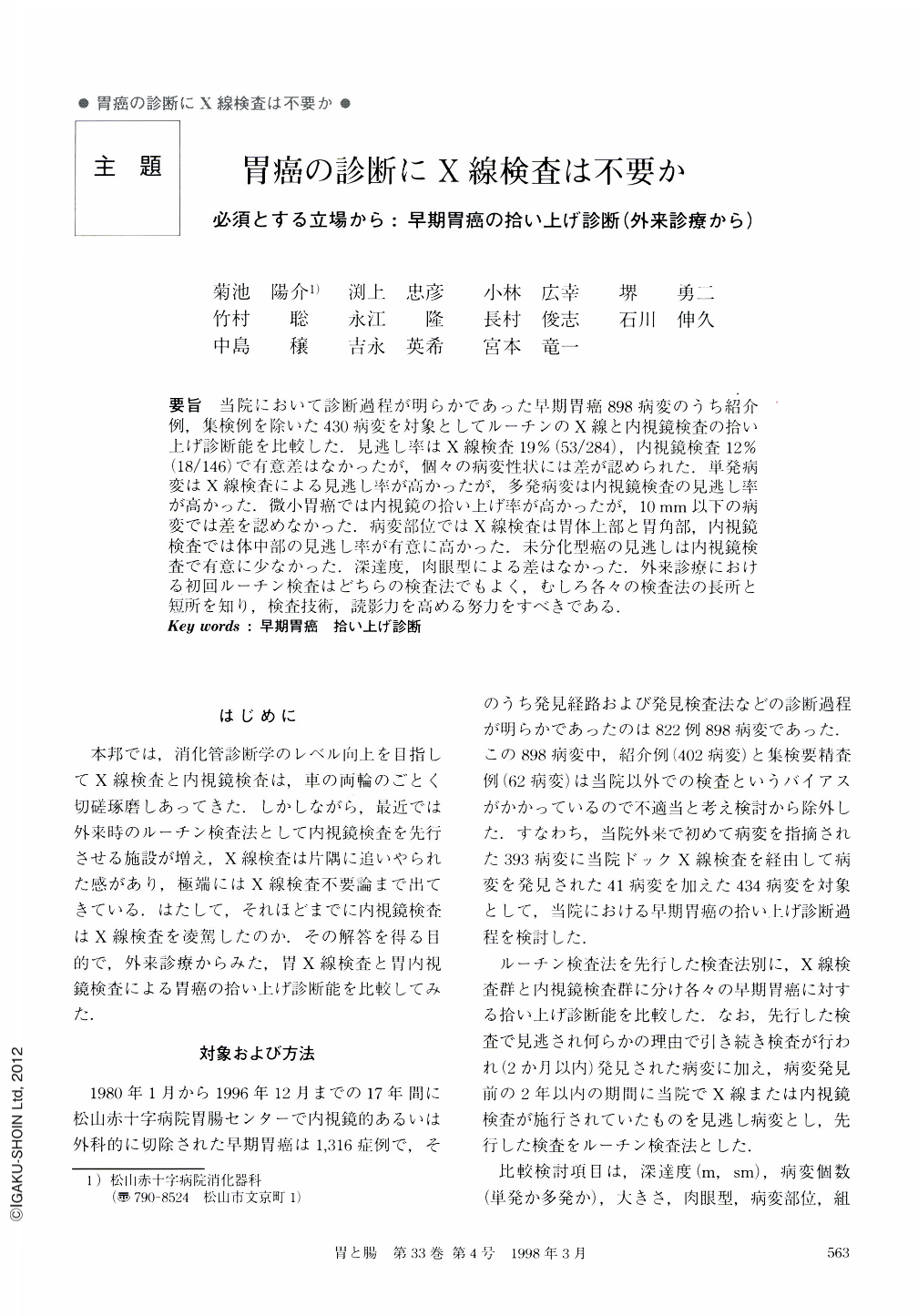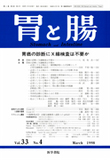Japanese
English
- 有料閲覧
- Abstract 文献概要
- 1ページ目 Look Inside
要旨 当院において診断過程が明らかであった早期胃癌898病変のうち紹介例,集検例を除いた430病変を対象としてルーチンのX線と内視鏡検査の拾い上げ診断能を比較した.見逃し率はX線検査19%(53/284),内視鏡検査12%(18/146)で有意差はなかったが,個々の病変性状には差が認められた.単発病変はX線検査による見逃し率が高かったが,多発病変は内視鏡検査の見逃し率が高かった.微小胃癌では内視鏡の拾い上げ率が高かったが,10mm以下の病変では差を認めなかった.病変部位ではX線検査は胃体上部と胃角部,内視鏡検査では体中部の見逃し率が有意に高かった.未分化型癌の見逃しは内視鏡検査で有意に少なかった.深達度,肉眼型による差はなかった.外来診療における初回ルーチン検査はどちらの検査法でもよく,むしろ各々の検査法の長所と短所を知り,検査技術,読影力を高める努力をすべきである.
We analysed the diagnostic process and pathological features of 430 lesions of early gastric cancers selected from 891 lesions, and compared the detection ability of roentogenography and endoscopy. The failure rate was 18.7% (53/284) in roentogenography, and 12.3% (18/146) in endoscopy, revealing no statistically significant difference. In the cases of multiple gastric cancers, the failure rate of endoscopy was higher than that of roentogenography, while in cases of single lesions, the contrary was the case. As for size, in lesions smaller than 5 mm, the failure rate of endoscopy was lower than that of roentogenography. However, for lesions between 10 mm and 5 mm there was no difference. As for site, the failure rate of roentogenograhy was higher in the upper body and the angle, and that of endoscopy was higher in the middle body. The failure rate for undifferentiated cancer was significantly lower in endoscopy. As for detection of depth and gross type of cancer, there was no difference between the two methods. We suggest that roentogenography and endoscopy are equally useful as methods of screening, and that what is most important is the effort to improve the diagnostic techniques in each method, and comprehension of the merits and demerits of each method.

Copyright © 1998, Igaku-Shoin Ltd. All rights reserved.


